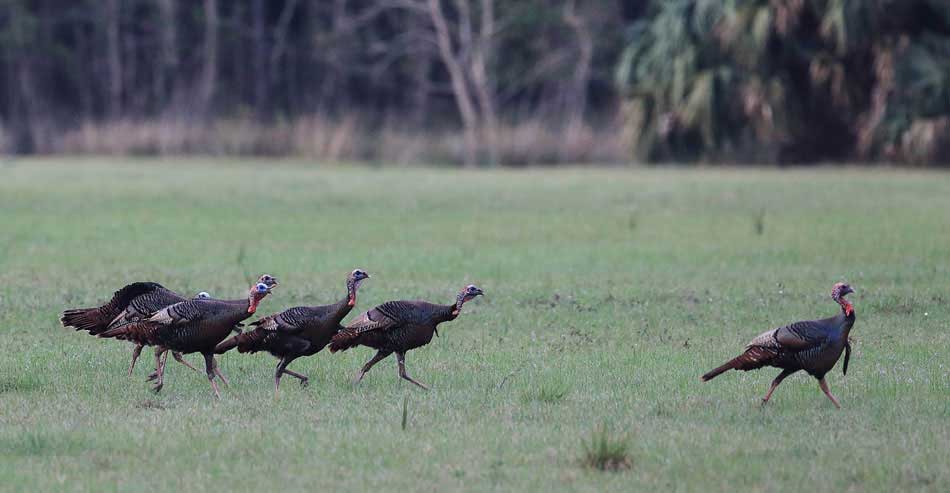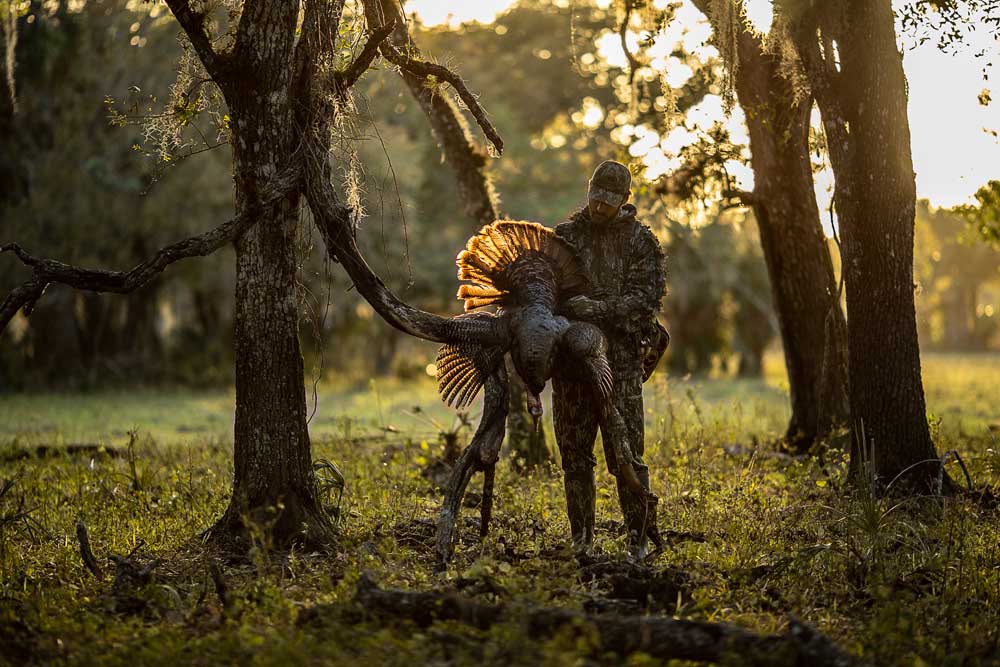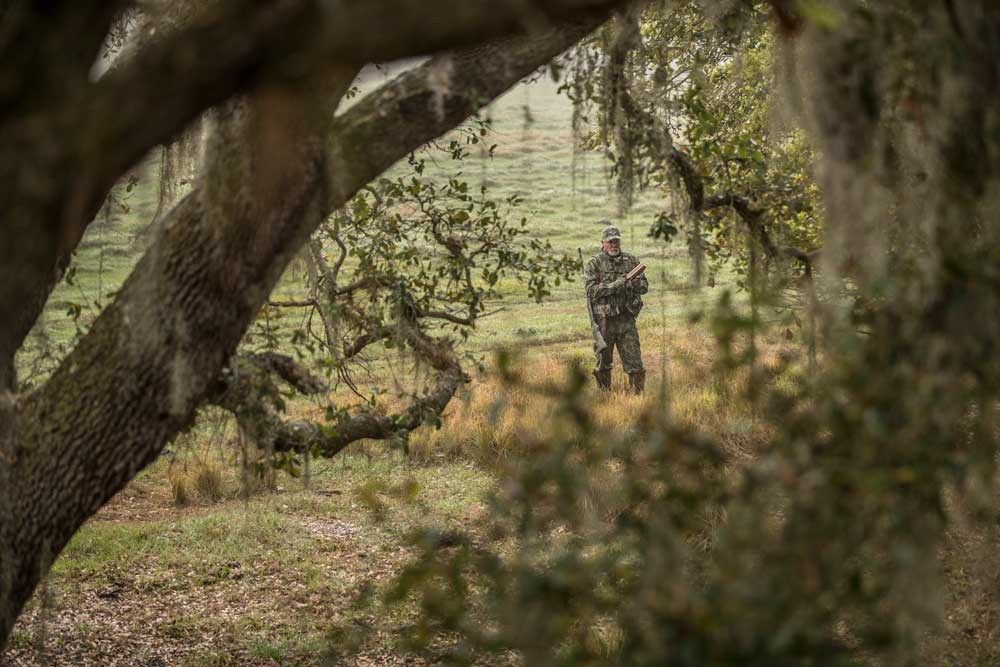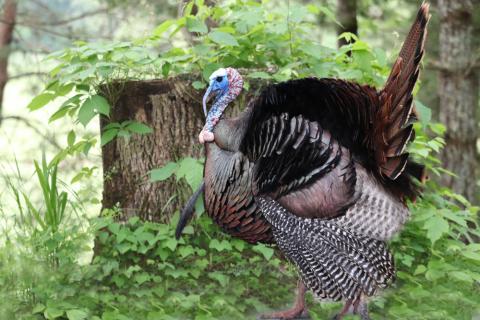Named after the famed Seminole warrior and leader, the Osceola (Florida) turkey is notoriously hard to call in and hunt. Years of hiding from predators in swamps and roosting over water have made this subspecies of wild turkey one of the most challenging to bag.
This species is, however, on the Grand Slam turkey run, so, if you're looking to complete your Grand Slam, you'll be hunting Osceola at some point. One of the most challenging aspects of hunting the Osceola, other than their wariness and relative silence, is the difficult terrain where they are distributed.
If you want to complete your Grand Slam by bagging an Osceola turkey, here are some details about where they live and what they like to do in their habitats.

Talking Turkey
There are two distinct wild turkey species—the North American wild turkey and the Ocellated turkey from central America. From the North American wild turkey come five subspecies—Merriam's, Gould's, Rio Grande, Eastern, and Osceola.
Eastern turkeys are the most prevalent and abundant species in North America, occupying 38 states and many Canadian provinces. Typically, they have the longest beards and the loudest gobbles of the bunch.
Osceola turkeys are the gobblers native to central and southern Florida, mostly south of Orlando. There's also an Osceola and Eastern turkey hybrid, and the Eastern wild turkey is also found in Northern Florida. The estimated number of Osceola turkeys in Florida is about 100,000.
Osceolas have shorter beards and quieter gobbles than their Eastern cousins. Hunters characterize the Osceolas as the wariest and hardest to catch of all the wild turkeys.
Osceola Habitat
Historically, Osceola turkeys, along with their Eastern counterparts, were isolated in remote areas made up of timberland. These areas were ideal as a turkey habitat because they were almost inaccessible, which kept both legal and illegal turkey hunting down.
The topography also made any cultivation of these timberlands very difficult. Originally, wildlife biologists associated turkey habitat with these dense forests, but that isn't strictly correct. Thanks to trap-and-transfer programs in the United States, turkey populations blossomed all over the U.S., and biologists could get a better read on where turkeys liked to reside.
In general, wild turkeys need a few necessities—a water source, trees for cover during the day and roosting at night, and grasses for adults to find food and for poults to forage for insects.
Scientists identified four main habitats of the wild turkey—riparian zones (rivers and streams), grasslands, pine savannas, and forest clearings. For the Osceola turkey, there's one more key habitat—the swamp. Cypress, pine, or oak roosts, as well as palmetto flats, are some of the Osceola's choice habitats.
Osceola Habits
These turkeys, native to Florida, are considered the most cautious of all the turkey subspecies. Osceolas generally roost over water, mainly because of all the predators down on the ground that are ready and willing to eat them. With so many predators lurking about, the Osceola turkey is continuously on the alert and is particularly sensitive to any sound or movement that he can't immediately distinguish.
Usually, turkey hunters set up calls anywhere from 100 to 150 yards from where the turkey roosts, but that will most likely have you sitting in water if you're going after Osceola. Therefore, to catch an Osceola, you have to discover where the turkey goes after he flies down from his roost tree. Once the turkey flies down from his roost, he will generally spend the day grubbing for food. That's where you want to catch him.
The other challenging aspect of hunting Osceolas is that they've learned that the more they gobble, the more predators find them. These turkeys are relatively silent compared to their noisy brethren. Some Osceolas gobble a few times at the break of day and then stay quiet for the rest of the daylight hours, making locating and bagging them challenging.

Osceola Terrain
To hunt the Osceola turkey, you will have to get used to hunting in two types of terrain—pastures and swampland. Some turkeys spend all their time—day and night—in the Florida swamps, so bringing knee-high boots with you on your Osceola hunt is crucial to your comfort.
When hunting Osceola in a swamp, the dense vegetation warps sounds and the distance they cover. It will be hard to gauge where the turkey is by his gobble, and it will be even harder to draw him to you with calls of your own.
You may hear a turkey gobble and perceive it to be a quarter to a half-mile away from you when he is only 50 to 100 yards away. This works the same with your turkey calls; the Osceola may not be able to hear them through the dense underbrush or, if he does, may not be able to get to the call quickly.
Other Osceolas roost over water and then fly to a nearby cattle pasture that may be quite large. They then spend the day in this pasture before returning to their roosts. You may be able to see quite a few Osceolas in this type of open terrain, but getting close to them or getting them to draw nearer to you is a challenge with the ever-wary Osceola.

Finding Osceolas
Osceolas congregate at fresh burns or forest edges to find their food. Look for strut zones, turkey droppings, and feathers to see if you've picked the right locale.
Some successful hunters don't waste their time finding the Osceola's roost trees but instead pinpoint where the turkeys fly from their roost. If you see any of the tell-tale signs of turkey habitation, set up or make a blind and get ready to wait.
Finding Osceolas in Cold Weather
Just like other turkeys, Osceolas become even quieter the colder it gets. Florida gets some cold snaps in the early spring and, at this time of the year, the turkeys are henned up, so it may be hard to rouse a gobble out of a tom.
Turkey hunting in cold weather can be a mostly silent affair. You may never use your calls in this situation, and you may never hear an Osceola gobble. But if you study him thoroughly and pick your location thoughtfully, you may bag yourself an Osceola tom before the hunt is over.
The Takeaway
Hunters prize Osceola turkeys because their distribution is limited to the southern peninsula of Florida. But these birds are wary and hard to get at, so make sure you have the right kind of gear and be prepared to wait.



























